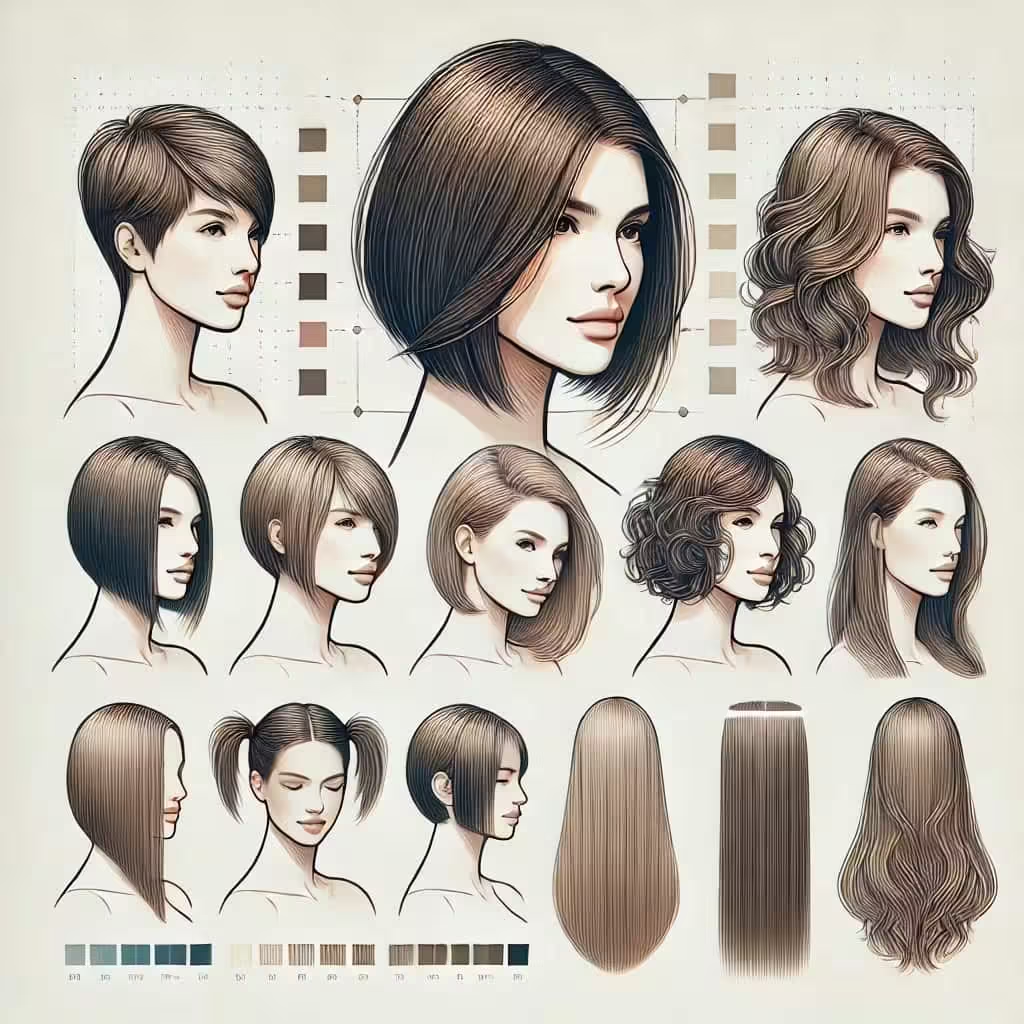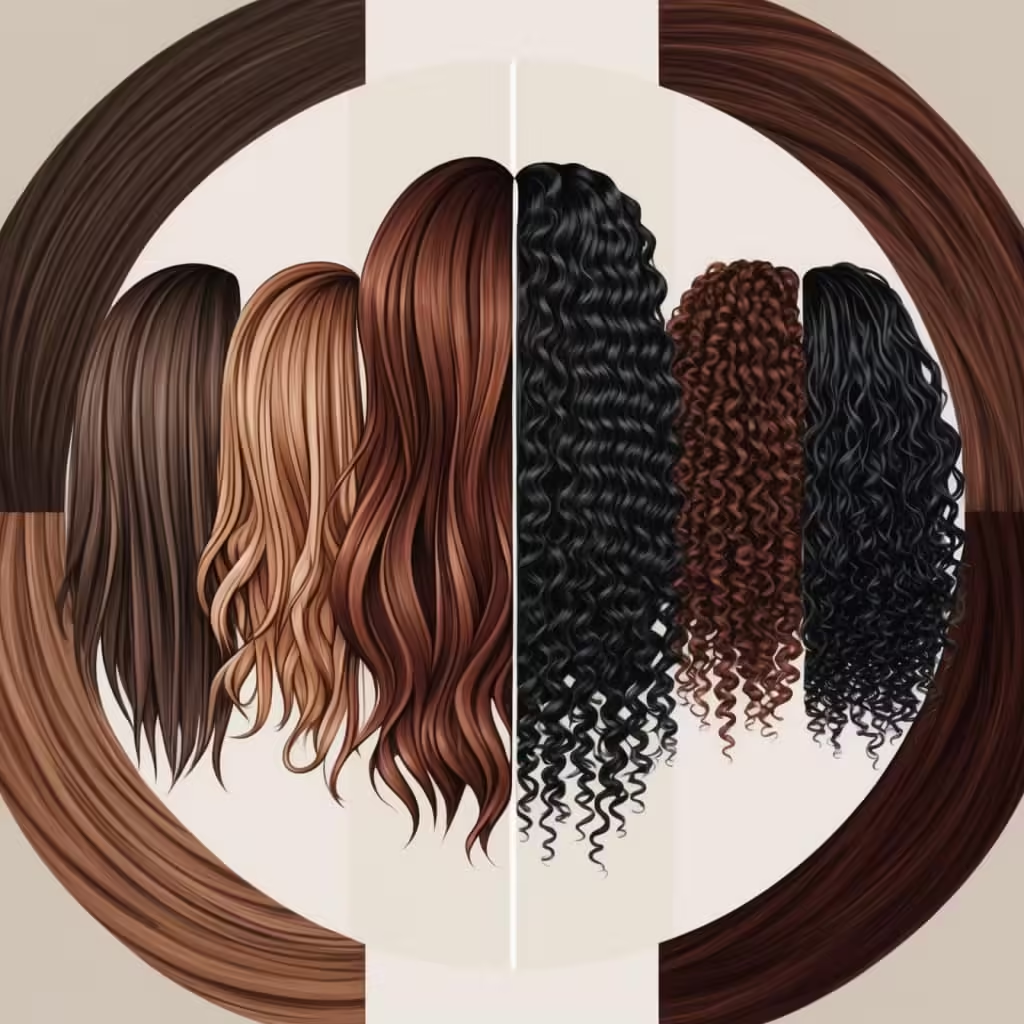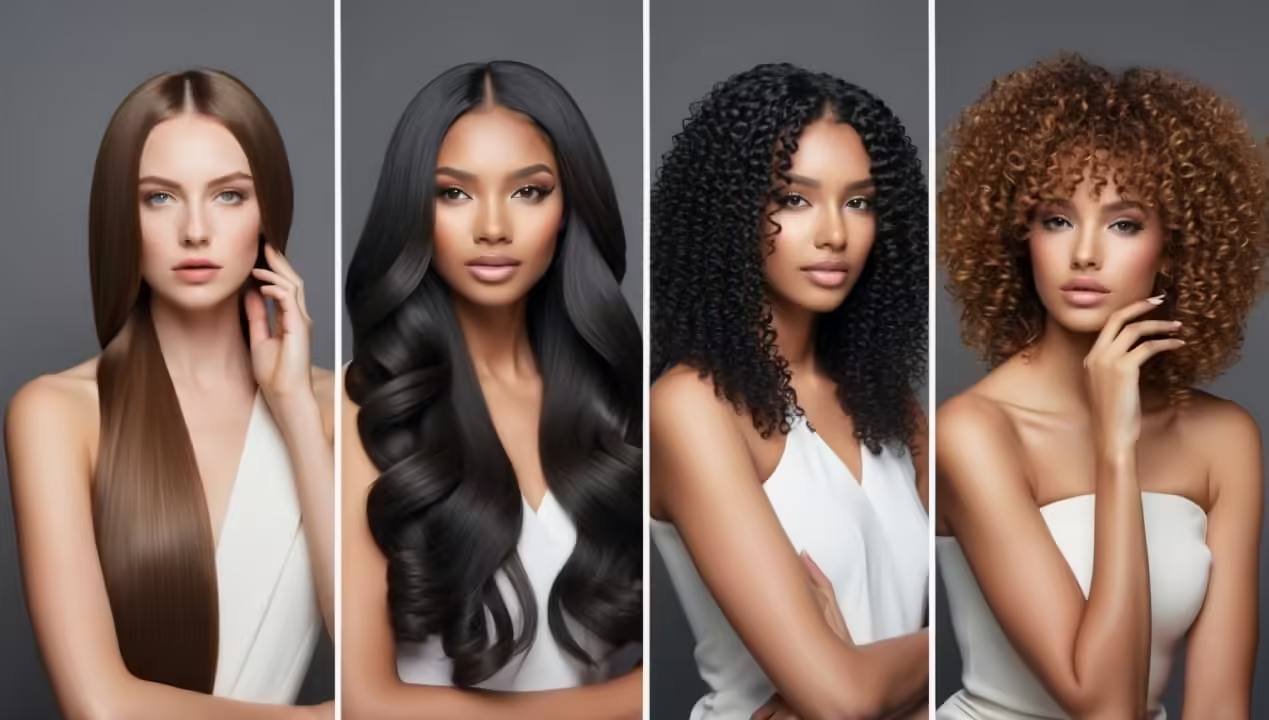When it comes to styling your hair, understanding different hair lengths is crucial. Whether you’re deciding on a new haircut or simply curious about hair extensions, a comprehensive understanding of the hair length chart will help you make the best decisions. Hair length is more than just a measurement; it can influence how your hairstyle looks, feels, and behaves. In this guide, we’ll break down everything you need to know about hair lengths, including how they are measured, common terms used, and popular lengths for men and women.

What is a Hair Length Chart?
A hair length chart is a visual guide that helps you understand the different lengths of hair. Whether you’re growing your hair out or cutting it short, knowing these lengths can help set realistic expectations. The chart typically measures hair from the top of the scalp to the tips and uses body landmarks—such as shoulders, armpits, waist, and hips—to explain where the hair will fall at each length.
Understanding hair lengths is essential for both men and women. For men, terms like “short,” “medium,” and “long” hair can be vague, making it crucial to reference a hair length chart for men or a male hair length chart to get a clearer picture of specific lengths.
Hair Length Categories: From Short to Long
Buzz Cut and Short Hair Lengths
For men and women, buzz cuts and short hair are the quickest styles to achieve and maintain. Hair length for buzz cuts is often less than 1 inch. These are extremely low-maintenance options and can highlight the structure of your face.
- Ear Length: Hair that barely touches the ears is often less than 6 inches long. It is commonly seen in short bob cuts for women or classic short cuts for men.
- Chin Length: Hair that reaches the chin is around 9 to 12 inches long. This length is common for chin-length bobs, which are both fashionable and easy to maintain.
- Shoulder Length: At around 12 to 14 inches, shoulder-length hair is one of the most versatile. For men, this length offers a mid-length style, while for women, it’s great for ponytails, updos, or leaving it down.
Medium Hair Lengths
Medium-length hair offers flexibility and variety when it comes to styling. For women, this length typically ranges from the shoulders to the collarbone, and for men, it can signify a more relaxed, carefree look.
- Collarbone Length: This length, approximately 16 inches, is just below the shoulders and is popular among women looking for a manageable yet stylish cut.
- Armpit Length: Armpit-length hair, at around 24 inches, is where you begin to transition into longer lengths. This length is great for both men and women looking to explore more elaborate styles.
Long Hair Lengths
Once your hair reaches past your shoulders, you’re entering the world of long hair. Long hair can be luxurious and is often a goal for those seeking a dramatic or feminine look.
- Mid-back Length: At approximately 24-28 inches, mid-back hair is striking and offers numerous styling options. For those with curly or coily hair, this length may seem shorter due to shrinkage, but the actual length remains the same.
- Waist Length: Waist-length hair, around 30 inches long, offers a bohemian and feminine aesthetic. It’s often the length most people think of when they dream of “long” hair.
- Hip Length: Hip-length hair, typically 36 inches long, is a showstopper. This length requires a lot of maintenance and care but can be incredibly rewarding for those who want to make a statement with their hair.
How Hair Texture and Type Affect Length Perception

Your hair’s texture—whether straight, curly, or coily—greatly influences how it appears. For example, coily hair tends to shrink more and can make hair appear shorter than it actually is. Knowing how to care for your hair type, especially for those with high porosity hair, is key to maintaining length and health. Learn more in our article on High Porosity Hair Care: Top Tips and Best Products.
You can learn more about hair texture and porosity in this guide on determining your hair type.
- Straight Hair: Appears the longest because it lies flat. For example, 12-inch straight hair will reach shoulder length.
- Curly Hair: Often appears shorter than it is because of curl shrinkage. 12-inch curly hair might look like it’s chin length, depending on the curl pattern.
- Coily Hair: Coily or kinky hair experiences the most shrinkage, often appearing much shorter than its actual length. If you’re measuring coily hair, be sure to stretch it out to get the accurate length.
Hair Extension Length Chart: What You Need to Know
If you’re considering hair extensions, understanding the hair extension length chart is crucial. Extensions come in various lengths, and knowing what length will look best for your hair type and desired style is important.
- Length Hair Extensions Chart: Hair extensions are typically available from 10 inches to 24 inches in length. Shorter extensions are ideal for adding volume to shorter hair, while longer extensions can create dramatic looks for shoulder-length or longer hair.
Factors That Influence The Length and Growth
Environmental Factors and Hair Length
Hair length can be affected by environmental factors, particularly humidity. When humidity is high, curly hair may frizz and straight hair might go limp due to changes in its length. In fact, hair can increase in length by up to 3% in humid conditions. For an interesting experiment on how humidity affects hair length, check out this hair hygrometer activity
Genetics and Hair Growth Cycles
Your hair’s growth rate and final length are determined largely by genetics. The average person’s hair grows about half an inch per month, but this can vary based on your hair’s growth cycle and health.
Hair Care and Maintenance
Good hair care practices—like regular trims, scalp care, and the use of nourishing products—are vital to keeping your hair healthy and preventing breakage. When growing your hair out, it’s important to maintain a balance between letting it grow and trimming away split ends. You can also explore different oils to improve hair strength and growth, as discussed in the Ultimate Guide for Nourished, Strong, Healthy Hair.
Hair Length Goals: Finding Your Perfect Length
Your ideal hair length depends on various factors, including your lifestyle, maintenance preferences, and personal style. While some may prefer short hair for its ease, others might dream of long, flowing locks. Understanding where you fall on the hair length chart for guys or hair length chart for women can help you plan your next hairstyle.
Choosing the Right Hair Length for Your Face Shape
Your face shape plays an essential role in deciding what hair length will look best on you.
- Round Faces: For round faces, longer hairstyles that elongate the face, such as shoulder-length cuts, are a good option. Additionally, using products like rosemary shampoo can keep your hair healthy and manageable, which you can learn more about in our guide on the Best Rosemary Shampoo: Benefits & Top Picks for Healthy Hair.
- Oval Faces: This face shape is versatile and can pull off any hair length, from short bobs to waist-length hair.
- Square Faces: Mid-length cuts with soft layers can help soften the sharp angles of a square face.
How to Measure Hair Length at Home
Measuring your hair length is simple if you have the right tools:
- Start at the Scalp: Place a measuring tape at the crown of your head.
- Follow the Hair Down: Pull the tape down along the strand of hair to the tip.
- Record the Length: Note where the tape ends, and that will be your hair length.
Measuring hair extensions works similarly, but it’s important to follow the hair’s natural curve for accuracy.
Hair Length Chart for Men: A Must-Know for Styling
For men, understanding the hair length chart men can help in deciding what length is most flattering. Buzz cuts, medium lengths, or long hairstyles are all determined by how long your hair grows from the scalp to different points on your face and body.
Conclusion
Whether you’re maintaining short hair, growing out your locks, or trying out extensions, understanding the hair length chart helps set realistic goals and expectations. Knowing the terms and measurements will also help you better communicate with your hairstylist, ensuring you achieve your desired look. Keep in mind that factors like hair texture, genetics, and proper care all play a role in achieving your perfect length.
FAQs
- What is the best length for men’s hair?
It depends on the style you want. Short cuts like buzz cuts are low-maintenance, while longer hair offers more styling options. - How often should I trim my hair to maintain length?
Trimming every 6-8 weeks helps prevent split ends, allowing your hair to grow longer and healthier. - Can curly hair grow as long as straight hair?
Yes, but curly hair may appear shorter due to shrinkage. The actual length is the same. - What is the ideal hair extension length for shoulder-length hair?
Extensions around 16-18 inches blend seamlessly with shoulder-length hair. - How does hair texture affect length perception?
Straight hair appears longer than curly or coily hair because curls and coils shrink the hair’s visible length.

